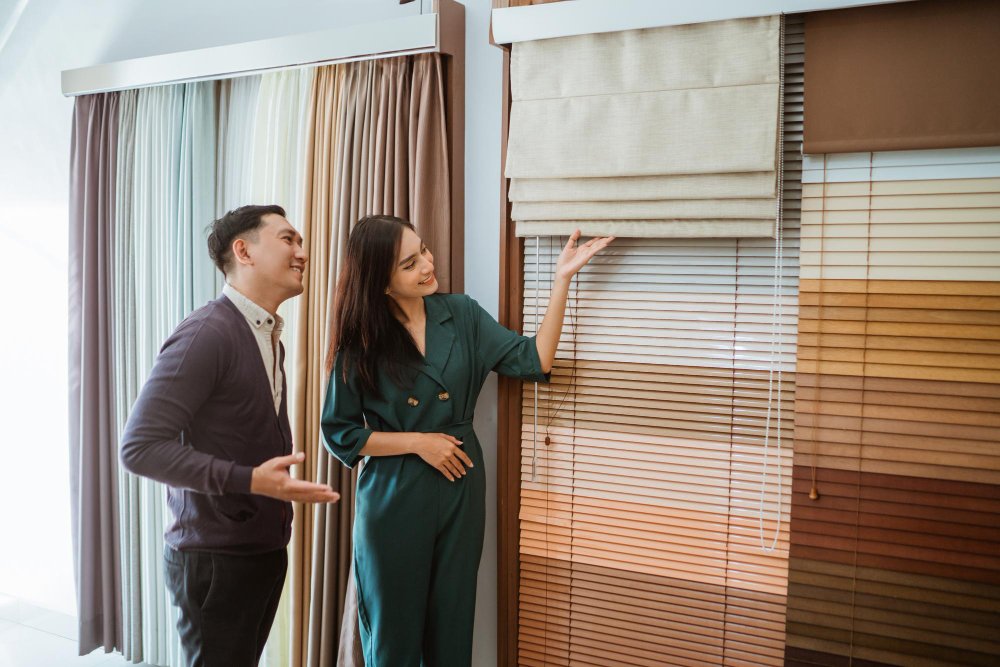Blinds vs. Curtains: How to Choose the Perfect Window Covering for Your Space

Blinds vs. Curtains: How to Choose the Perfect Window Covering for Your Space
Selecting the right window covering can dramatically impact your home’s aesthetic, comfort, and functionality. Blinds and curtains remain the two most popular choices for homeowners, but deciding between them is not always straightforward. Both options offer unique benefits and design possibilities, and understanding their differences can help you make an informed decision that suits your lifestyle, décor, and practical needs.
Blinds are typically made from hard materials such as wood, faux wood, aluminum, or PVC. They consist of slats that tilt to control light and privacy and can be raised or lowered entirely. Blinds are well known for their clean, streamlined look that suits contemporary, minimalist, or industrial interiors. They are ideal for spaces where precise light control is important, such as home offices, kitchens, and bathrooms. Venetian blinds, vertical blinds, and roller blinds offer versatility in design and functionality, making them a practical choice for many settings.
Curtains, on the other hand, are fabric panels available in a wide range of colors, patterns, and materials. They are renowned for their softness, elegance, and ability to add warmth and texture to a room. Curtains can be sheer for filtered light, semi-opaque for moderate privacy, or blackout for complete darkness, catering to various needs. They work beautifully in living rooms, bedrooms, dining areas, and any space where comfort and style are priorities. Additionally, curtains offer endless opportunities to coordinate with your existing décor, from subtle neutrals to bold prints.
One of the first factors to consider when choosing between blinds and curtains is the function of the room. If you need a high degree of light control or want to block glare on computer screens, blinds offer more precision by adjusting the angle of the slats. For example, in a home office or study, blinds allow you to reduce brightness without completely darkening the room, which can enhance productivity and reduce eye strain. In contrast, bedrooms often benefit from curtains, especially blackout curtains, which provide superior light blocking and a cozy, restful atmosphere that supports better sleep.
Privacy is another key consideration. Blinds can quickly adjust from fully open to fully closed, allowing you to control the level of privacy throughout the day. In bathrooms or street-facing rooms, blinds can let light in while obscuring the view from outside. Curtains also offer privacy, but to change the level of coverage, you typically need to open or close them completely or layer them with sheers underneath for flexibility. Layered curtains can offer a beautiful balance of daylight and privacy, especially in shared spaces such as living or dining rooms.
Energy efficiency is an increasingly important factor for homeowners seeking to lower utility bills and improve comfort. Curtains, particularly those with thermal or insulated linings, can significantly reduce heat loss during winter and minimize heat gain during summer. Heavy drapes act as a barrier against drafts and help maintain a stable indoor temperature, making them an excellent choice for older homes with less efficient windows. Blinds can also contribute to energy savings; cellular or honeycomb blinds, for instance, are designed to trap air within their cells, offering insulation and reducing energy costs. However, traditional slatted blinds provide less insulation than thick, lined curtains.
Maintenance is a practical aspect that often influences the decision. Blinds are generally easier to clean; a quick dusting or wipe-down keeps them looking fresh, and they are less likely to trap allergens compared to fabric curtains. This makes blinds a smart choice for kitchens, bathrooms, and homes with allergy sufferers. Curtains, by contrast, require occasional laundering or professional cleaning, especially in households with pets or smokers. Lightweight fabrics can often be machine washed, while heavier materials may need dry cleaning, adding to long-term maintenance considerations.
Aesthetic preference plays a significant role in the blinds versus curtains debate. Curtains create softness, movement, and drama, making them ideal for spaces where you want to add elegance and comfort. They can visually expand a room by hanging from ceiling to floor or add a pop of color and pattern that enlivens an otherwise neutral palette. Blinds, with their neat lines and compact design, offer a modern, understated look that can make rooms appear sleek and uncluttered. For a transitional style, many homeowners choose to combine both—using blinds for functionality and layering curtains for decorative effect.
Cost is another factor that may guide your choice. Blinds are often more budget-friendly, especially in standard sizes and basic materials like aluminum or faux wood. They are a cost-effective solution for multiple windows or rental properties. Custom-made blinds or high-end materials can, however, increase the price. Curtains range widely in price, depending on the fabric, lining, and whether they are off-the-shelf or custom-made. While they can be a more significant investment, they also offer greater potential for personalization.
Ultimately, the perfect window covering depends on your individual needs and the specific characteristics of each room. Blinds offer practicality, easy maintenance, and precise control, making them ideal for functional spaces and modern interiors. Curtains provide softness, warmth, and endless design possibilities, transforming rooms into inviting and stylish sanctuaries. By considering factors such as light control, privacy, insulation, maintenance, style, and budget, you can confidently choose the right solution for your home.
If you’re still undecided, remember that you don’t have to choose one over the other—many designers recommend combining both for maximum versatility. Pairing blinds with curtains allows you to enjoy the best of both worlds: blinds for practicality and light management, and curtains for beauty and ambiance. Whatever you choose, investing in quality window coverings will enhance your home’s comfort, functionality, and visual appeal for years to come.